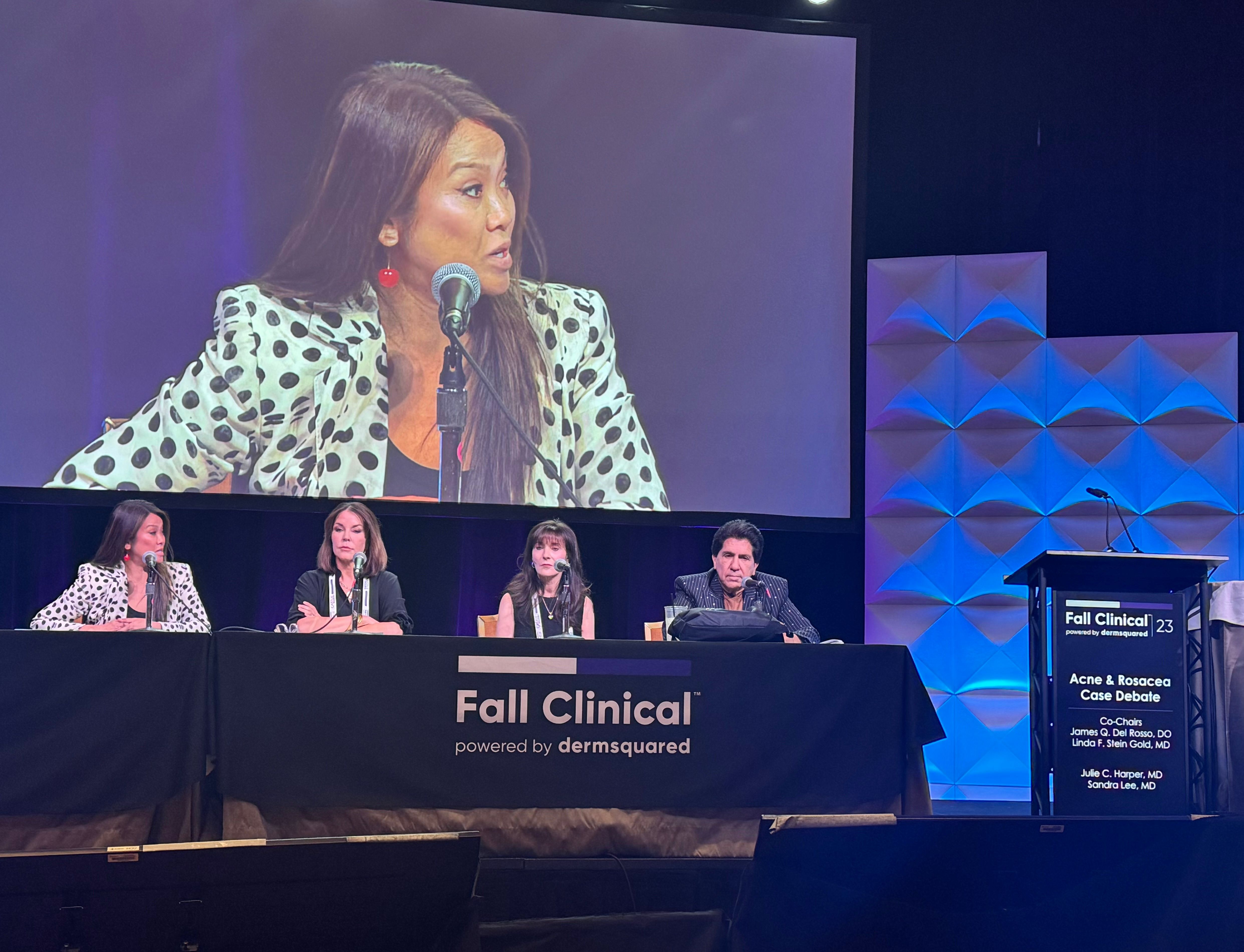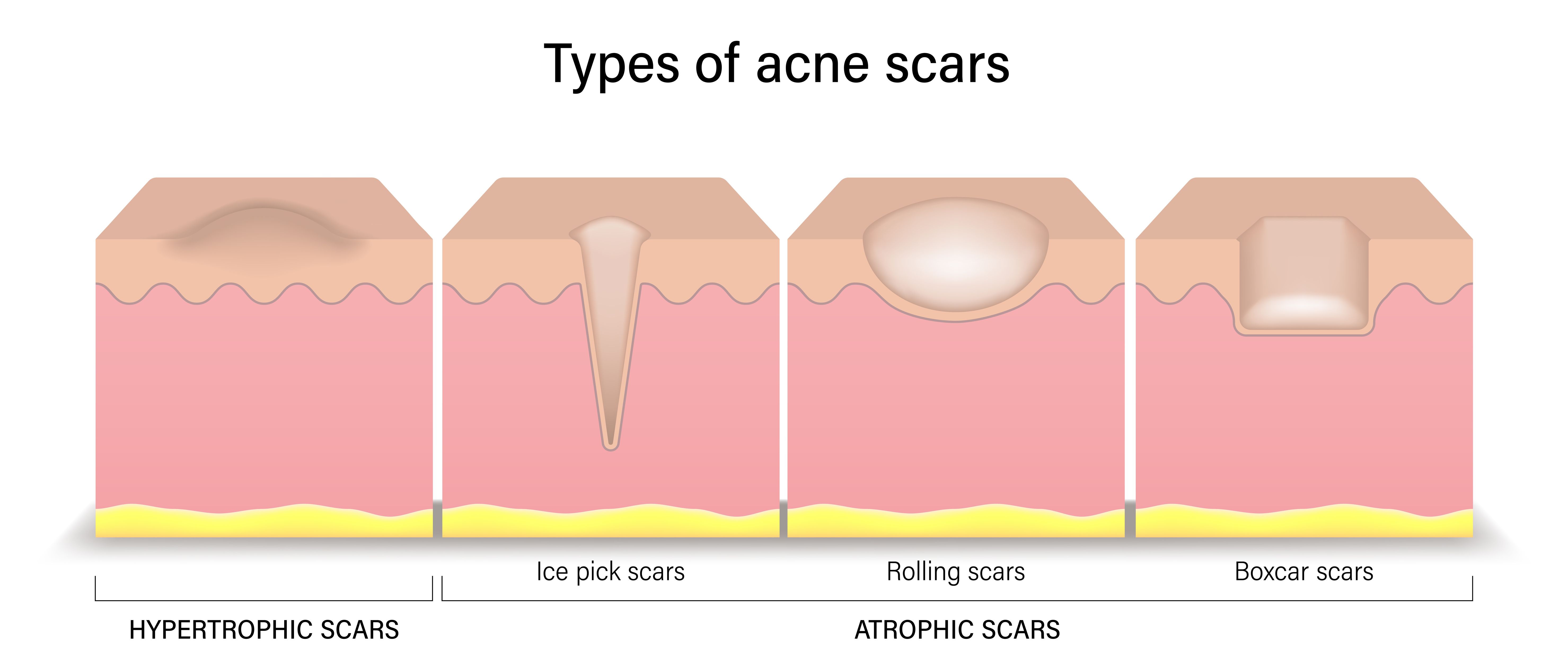- General Dermatology
- Eczema
- Chronic Hand Eczema
- Alopecia
- Aesthetics
- Vitiligo
- COVID-19
- Actinic Keratosis
- Precision Medicine and Biologics
- Rare Disease
- Wound Care
- Rosacea
- Psoriasis
- Psoriatic Arthritis
- Atopic Dermatitis
- Melasma
- NP and PA
- Skin Cancer
- Hidradenitis Suppurativa
- Drug Watch
- Pigmentary Disorders
- Acne
- Pediatric Dermatology
- Practice Management
- Prurigo Nodularis
News
Article
Considerations to Manage Different Types of Acne Scars
Author(s):
Sandra Lee, MD, and other top acne experts took the stage to debate cases and treatments.
“[When treating acne scars] I will look at their skin thickness and the skin thickness, how old they are, their skin type,” explained Sandra Lee, MD. “There's multiple other factors as well, like affordability. These treatments can be a very expensive process, the number of treatments needed and there's usually a lot of treatments that are required and it's really important to manage patients’ expectations.”
Left to right: Sandra Lee, Julie Harper, Linda Stein Gold, James Del Rosso

Sandra Lee, MD, is a board-certified dermatologist and Mohs surgeon at Skin Physicians & Surgeons in Upland, California and has gained notoriety as Dr. Pimple Popper on TLC. She joined James Del Rosso, DO; Julie Harper, MD; and Linda Stein Gold, MD, to delve into cases and pearls during the session “Acne and Rosacea Case Debate” at the 2023 Fall Clinical Dermatology Conference.
Lee took a deep dive into the types of acne scars and methods to treat each one.
Keloid scars arise from an excess of cell production during the body's post-inflammatory healing process. They are hypertrophic and appear discolored, elevated, bumpy or puffy. They occur across all skin types with a higher incidence in darker skin tones and can be prevalent in a family history.
Treatment Options for Keloid Scars
1. Cortisone shots: Corticosteroid injections that break down collagen and reduce scar tissue, though effectiveness may vary.
2. Lasers: Can enhance the appearance of diminished keloid scars post cortisone treatment.
3. Retinoids: Topical vitamin A application (e.g., OTC retinol, prescription tretinoin) after scar reduction from cortisone.
4. Surgery: Surgical removal is an option, but keloids may recur, making topical treatment generally preferable.
Ice pick scars form due to collagen loss, resulting in a deep depression resembling a small puncture. They are an atrophic scar and appear as deep pits resembling tiny needle punctures. Ice pick scars are typically seen in individuals prone to severe cystic acne on the jawline, chin, and cheeks, due to hormonal factors.
Treatment Options for Icepick Scars
1. Chemical peels: Induce controlled skin "burns" to prompt healing and closure of openings (requires professional administration).
2. Punch grafting: Removal of scar followed by skin grafting, often from behind the ear, potentially resulting in a slightly raised outcome.
3. Punch excision: Scar removal with suture closure, leading to a flatter, finer scar.
Rolling scars manifest as undulating scars with soft, smooth edges, becoming more noticeable with age due to natural skin laxity. They are atrophic with a shallow, wave-like, saucer-shaped appearance. Affected individuals include those with long-term inflammatory acne and more prevalent in men.
Treatment Options for Rolling Acne Scars
1. Microneedling: Stimulates collagen production through controlled skin micro-injuries using multiple needles.
2. Subcision: Breaks up tough scar tissue by inserting a sharp needle beneath the skin's surface.
3. Lasers: Resurface top skin layers, encouraging collagen production (multiple sessions with associated downtime).
Boxcar scars arise as an effect of inflammatory acne, characterized by red, inflamed papules and pustules. These atrophic scars take on an appearance with round or oval-shaped depressions with distinct vertical edges, akin to chickenpox scars. These are common in those with inflammatory, cystic acne.
Treatment Options for Boxcar Acne Scars
1. Punch excisions: Removes the indented area, suturing edges together to close the gap.
2. Dermabrasion: Resurfaces the skin using an ablative instrument under local or general anesthesia.
3. Fillers: Temporary or semipermanent dermal fillers, as well as autologous fat transfer, can elevate scarred skin.
“The big take home is to make sure to give people hope, but also make sure they understand this is not just a one and done thing [treatment],” Lee concluded.
Reference
Del Rosso J, Harper J, Lee S, Stein Gold L. Acne and Rosacea Debate. Presented at: 2023 Fall Clinical Dermatology Conference: October 19-22, 2023; Las Vegas, NV.







